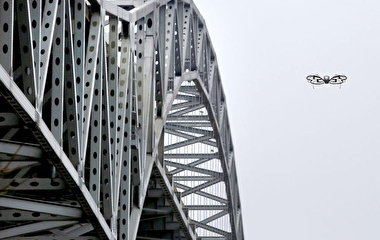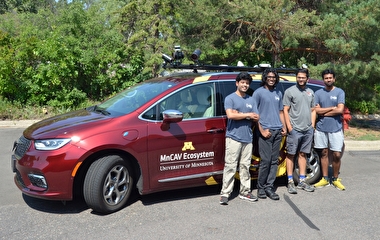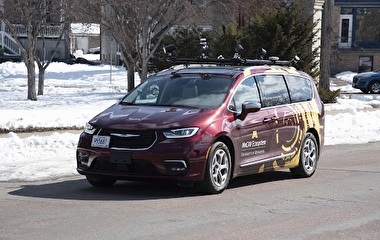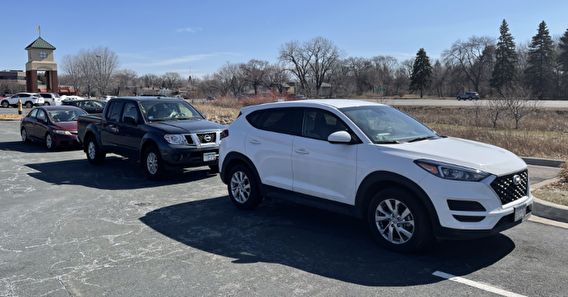
Green means go and yellow means go faster—so goes a wry take on driver behavior at traffic signals. But it’s not just travel time that increases when you brake for a red: Fuel consumption does, too. Could transmitting signal data to connected vehicles (CVs) reduce stop-and-go cycles and fuel use? U of M researchers say yes.
“Our research found that sending signal phasing and timing messages to connected vehicles would be a feasible way—both technologically and economically—to decrease fuel consumption,” says Michael Levin, an assistant professor in the Department of Civil, Environmental, and Geo- Engineering. (Connected vehicles use technology to communicate with each other, connect with traffic signals and other road infrastructure, or obtain data from a cloud.)
The study leveraged the MnDOT Connected Corridor Project, which deployed technology for vehicle-to-infrastructure communication in 2020 along Minnesota TH 55 between downtown Minneapolis and Interstate 494. The technology captures signal phasing and timing (SPaT) data and broadcasts it to CVs instrumented with dedicated short-range communications (DSRC) receivers.
For Levin’s study, four CVs with DSRC receivers were outfitted to record SPaT and other data under various traffic scenarios. Researchers test-drove the cars through intersections to collect data on signals, speeds, and traffic conditions. They then used the data to develop a traffic flow prediction model and speed control method that could predict upcoming traffic based on the SPaT data.
“The model assumes that both CVs with speed control and traditional vehicles intermingle,” Levin explains. “Because SPaT systems can be costly, MnDOT needed a better understanding of the impacts in real-world conditions.”
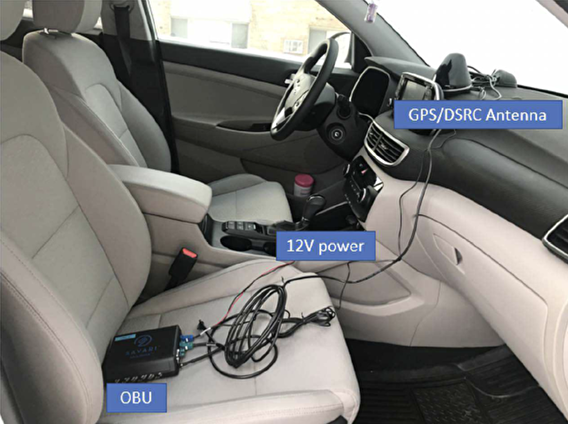
The four CVs were driven along the corridor a second time to test the model and speed control method. In lab testing, researchers simulated different mixes of CV platoons and the estimated fuel savings. After further refinements, the result was a holistic simulation methodology that can predict the benefits in fuel consumption with CAV market penetration rates from 10 to 90 percent.
The team found that fuel savings increase as market penetration rates increase. “Once connected vehicles are on the roads at any level, the benefits from fuel saved outweigh the costs of installation,” Levin says. For example, adding three prospective SPaT locations with a 10 percent CV market penetration yielded a fuel savings benefit ranging from 1.7 to more than 4.5 times the cost per corridor.
Fuel savings could be significant. Modeling of the TH 55 corridor yielded an approximately 12 percent fuel savings for a CV, while lab testing found an 11 percent improvement over a traditional vehicle. For selected corridors, fuel savings during peak hours would be around 14 percent.
“Over the long term, these systems could provide worthwhile benefits for all road users—thousands of gallons of fuel would be saved not just by connected vehicles but also by the traditional vehicles following them,” Levin says.
The research positions MnDOT to plan CV infrastructure once there are meaningful market penetrations. “It’s helpful to have this cost-benefit assessment before we invest in more signal phasing and timing infrastructure,” says Daniel Rowe, ITS project manager with MnDOT’s Office of Connected and Automated Vehicles.
The MnDOT-funded study refined preliminary results from a previous project funded by the Minnesota Local Road Research Board.
Writer: Megan Tsai
